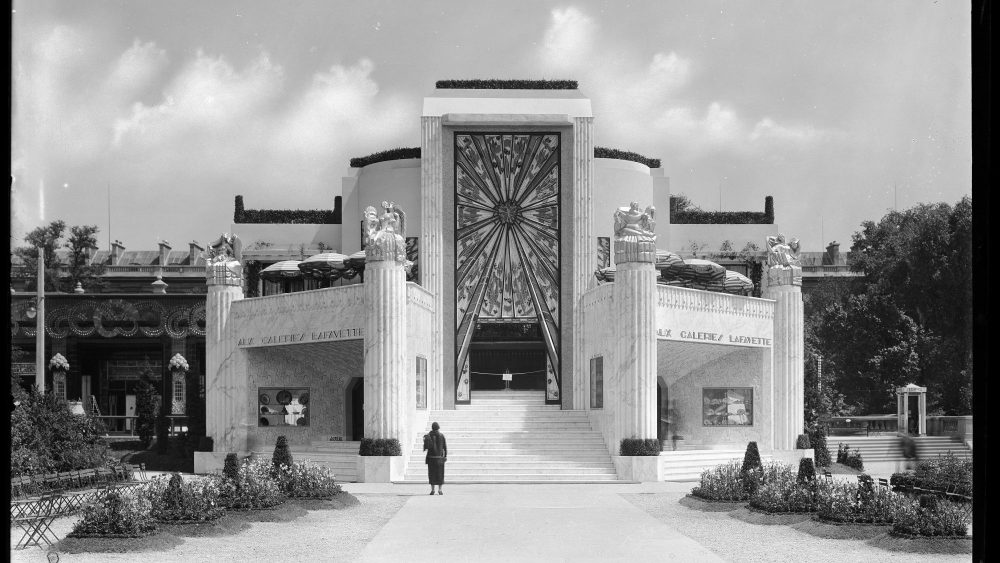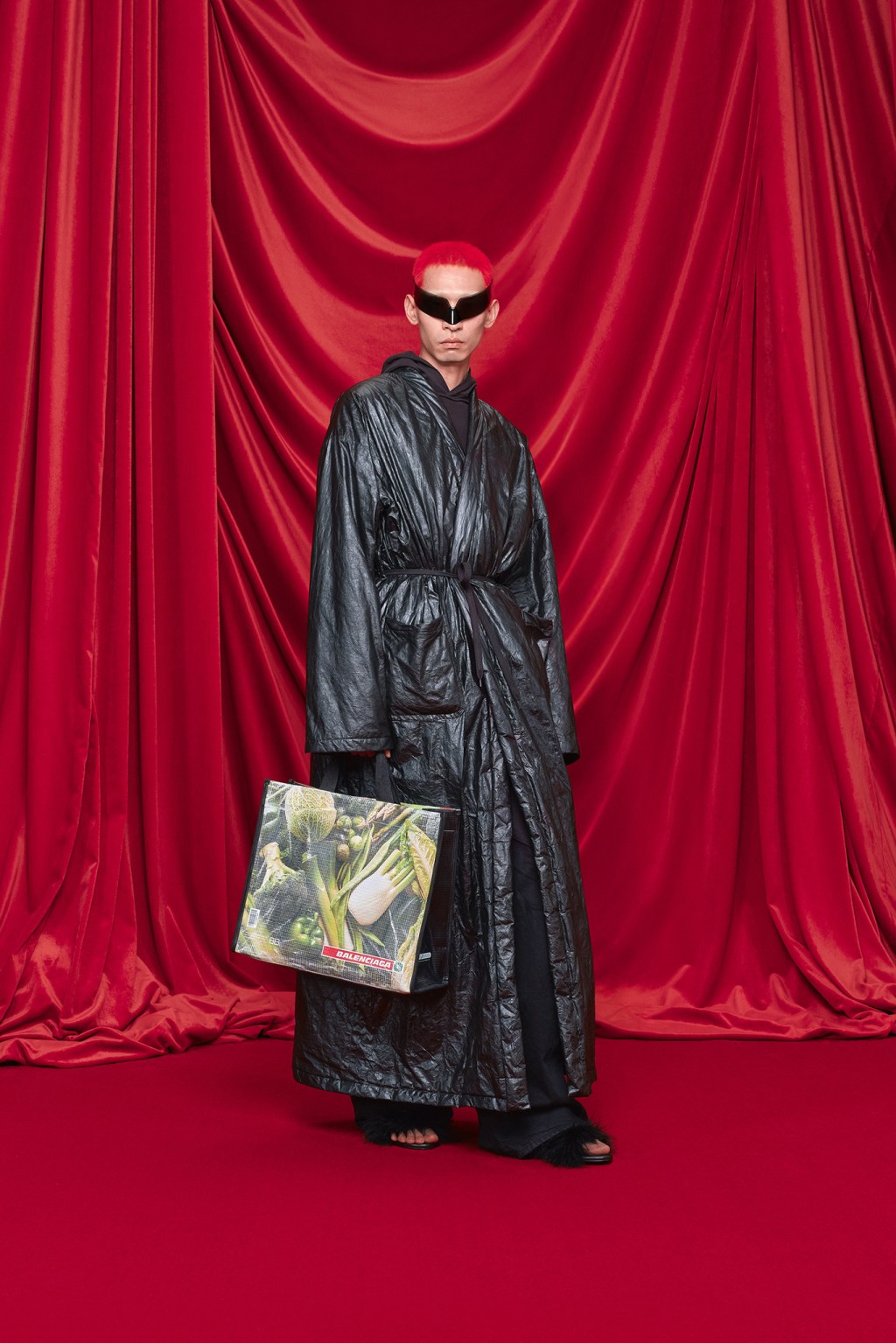Art Deco, an emblem of the Roaring ’20s, remains one of the most enduring and revolutionary design movements of all time.
The cohesive and signature design elements, including motifs, materials, and techniques, continue to reverberate throughout architecture, design, fashion and even jewelry worlds, 100 years after it debuted at the 1925 Exposition Internationale des Arts Décoratifs et Industrials Modernes, or International Exhibition of Modern Decorative and Industrial Arts, in Paris. From that day on, the movement, quickly embraced and adapted worldwide, would forever alter the creative cultures of cities like New York, Paris, Milan and even Miami and Mumbai.
This month, fashion brands, hotels, restaurants and design firms are celebrating Art Deco’s 100th birthday with a big bang that one can almost hear the orchestra playing George Gershwin’s Jazz Age composition “Rhapsody in Blue.” To mark the anniversary, WWD takes you inside this very important year of celebratory events around the world.
You May Also Like
Born in Paris

Paris, the epicenter of the movement, saw the Art Deco style emerge much earlier than 1925. At the start of the 20th century, cleaner geometries and stylization came to the fore with new directions that could be felt as early as the 1900 Exposition Universelle, the World’s Fair celebrating human achievement, as well as at the Salon d’Automne, where rectilinear furniture echoed throughout the ateliers across the city.
Couturiers and jewelers were also quick to catch on. In a language of diamonds, emeralds, sapphires and rubies, Cartier and Van Cleef & Arpels envisaged elaborate, futuristic pieces that contributed greatly to what is known as Roaring ’20s style.
Architectural landmarks abound in Paris’ classical revival Théâtre des Champs-Elysées, built in 1913, the Prince de Galles hotel, located in the so-called Golden Triangle near the Champs-Elysées and in 1937, the Palais de Tokyo, now an art institution that is home to many a Fashion Week event.
Musée des Arts Décoratifs ‘100 Years of Art Deco’

The upcoming “100 Years of Art Deco” exhibit Musée des Arts Décoratifs promises to transport visitors to a fabled vestige of its vibrant past. Inside the museum’s nave, a restored cabin from the former Étoile du Nord train, along with three models of the Orient Express — reimagined by present-day architect Maxime d’Angeac — will take center stage. It is an invitation to explore a world where art, beauty and dreams are recreated in the present day, just as they were in 1925.
Elsewhere, the exhibit brings together 1,200 works of sculptural furniture, precious jewelry, art objects, drawings, posters and fashion pieces, underscoring the richness, elegance and contradictions of a movement that continues to resonate today. The many masterpieces of the museum’s Art Deco collection, the largest in the world, will be on display, such as pieces by Jacques-Émile Ruhlmann, who pioneered the pavilion at the 1925 Exposition Internationale des Arts Décoratifs et Industriels Modernes, which gave birth to the term Art Deco. It will also showcase the library desk from the French Embassy by Pierre Chareau, which will be reinstalled for this anniversary.
The exhibit will run from Oct. 22 to April 26, 2026.
Musée des Arts Décoratifs, 107 Rue de Rivoli, 75001 Paris

‘Period Rooms of the Future’ by Invisible Collection at Féau Boiseries

London-based design platform Invisible Collection will unveil an exhibition set in the magical salons of Féau Boiseries, the family-run Parisian atelier, famous for procuring, building and restoring antique paneling to modern glory. Underscoring the visionary spirit of Art Deco pioneers, the firm will present rare, never-before-seen decor by French designer Jacques Adnet, architect Michel Roux-Spitz and Jacques-Émile Ruhlmann. His ability to elevate neoclassical into modern proportions and his detailed work in the homes of the upper echelons of Parisian society epitomize what we know today as Art Deco. “Rare paneling, shelving and boiseries, originally created for the tastemakers of their time, come to life again — a fascinating reminder of the cultural continuity between the 1920s and today’s collectible design,” Invisible Collection said.
The exhibit will run from Oct. 22 to Dec. 30.
Féau Boiseries, 9 Rue Laugier, 75017 Paris
Louis Vuitton Art Deco at LV Dream

A new exhibition by Louis Vuitton highlights the maison’s role in creating high-end travel accessories for the leading lights of the Jazz Age.
The French luxury brand is showcasing 300 rare items from its archives in the “Louis Vuitton Art Deco” show at LV Dream, the exhibition space located opposite the Samaritaine department store. At the heart of the exhibit are the creations of Gaston-Louis Vuitton, the grandson of founder Louis Vuitton, who set the stage for its present-day positioning as a “cultural” brand. In addition to steering the visual identity of Vuitton in the 1920s, via everything from product design to window displays, he was tasked with overseeing the area dedicated to leather goods and travel cases at the International Exhibition of Modern Decorative and Industrial Arts of 1925 — the event that cemented the French capital’s reputation as the trendsetter for modern decorative arts.
Bookings are available until Nov. 16.
For tickets, visit https://lvartdeco.seetickets.com.
LV Dream, 26 Quai de la Mégisserie, Paris
Prunier, a Caviar Shrine, Opens Its Doors Anew

Opened in 1924 on the eve of the Art Deco movement, Prunier restaurant on 16 Avenue Victor-Hugo in western Paris offers a striking example of Art Deco style with its opulent turquoise facade and the black marble-and-mosaic flooring inside, which are listed features. Considered the oldest caviar restaurant in the world, it became the place to be seen for generations of intellectuals, moguls and artists ranging from Ernest Hemingway to Yves Saint Laurent and Pierre Bergé.
After a summer refresh spearheaded by architect Lazaro Rosa Violan, it reopened in September under the banner of the Lapérouse Holding, a new hospitality group created by Benjamin Patou et Antoine Arnault. Its kitchen is helmed by French chef Romain Fornell.
Prunier, 16 Avenue Victor-Hugo, Paris
American Deco

In North America, Art Deco’s modernist style was celebrated well into the ’40s and inspired iconic New York City landmarks like the Waldorf Astoria and the Chrysler and Empire State buildings, as well as the American Radiator, Chanin, Daily News buildings, Radio City Music Hall and Rockefeller Center. A major disruptor, it is distinguished for its engine-inspired motifs like zigzag and sunrays and use of steel and aluminum.
In cities like Miami, Deco took a different turn, giving birth to “tropical modernism” which spurred a wave of climate-adapting designs that embraced nautical forms and elements, as well as pastel color palettes that made the The Colony Hotel and Park Central Hotel urban Miami Beach icons.
The Waldorf-Astoria Reborn

Considered as shrine to all things Art Deco, Manhattan’s Waldorf-Astoria has just reopened after an eight-year restoration. The famed hotel, which hosted A-listers of the time such as musician Cole Porter and the Duke and Duchess of Windsor, has been reimagined by French interior designer Pierre-Yves Rochon, and its updated Grand Ballroom is once again a beating pulse of the Big Apple.
The opening marked a series of restaurant debuts, including American Chef Michael Anthony’s American brasserie Lex Yard and the return of Peacock Alley, originally the grand marble corridor connecting the Waldorf and Astoria Hotels in 1897 New York. It earned its name from society writers observing the fashionable set “peacocking” there in their finest attire.
Inside, visitors will find a piano played by musician Cole Porter Piano, the famous Waldorf Astoria Clock, and Yoshoku, a Japanese dining concept, beside the famed “Wheel of Life” mosaic in Park Avenue Lobby. The 375-guest rooms were transformed and reworked to include the debut five specialty suites — spanning 1,550 to more than 5,000 square feet — and the 20,000-square-foot plus Guerlain Wellness Spa.
Waldorf Astoria New York, 310 Park Avenue, New York

Asia’s Deco Reflection

Shanghai emerged as a major center in Asia’s Art Deco movement as the Chinese metropolis and booming cosmopolitan treaty port was always a stylistic meeting point for Europeans, Americans and the Japanese. Early on, banks and trading houses were eager to project modernity and prestige, while Chinese architects trained abroad, eventually blending their learnings with Chinese aesthetics.
Buildings such as the Paramount Ballroom, the French-Renaissance style Wukang Mansion and the Peace Hotel by the Bund are among the most striking examples of the period. There are also myriad buildings dotted in the former French Concession, including a pair of villas that are now part of “The Garden Store,” the ICCF group’s dual flagship complex for Icicle and Carven.
In India, the Indian financial capital Mumbai, formerly known as Bombay, was dominated in the 1920s and ’30s by the Art Deco and Victorian Gothic architectural styles, in stark contrast to the engine-driven designs that fueled American architecture or the sleek monuments of Europe during that same period.
Set apart from Paris, New York City or Miami, Mumbai’s Art Deco era was driven by the demand for houses that were adapted to the environment. Residential buildings were erected with sturdier concrete materials and featured verandas, open balconies and flat roofs to help combat the tropical weather and heat. The era saw the birth of new architecture firms like Master, Sathe & Bhuta, which were led by young new graduates from India’s pioneering architecture and art institutions like the Sir JJ School of Art.
‘Ocean Drive to Marine Drive: Mapping a Century of Art Deco | Miami Beach to Mumbai (1925 – 2025)‘

In Mumbai, the Art Deco Alive! has organized a series of events that will kick off on Nov. 7 with the opening of the “Ocean Drive to Marine Drive: Mapping a Century of Art Deco | Miami Beach — Mumbai (1925 – 2025)” at the historic Dr. Bhau Daji Lad Museum.
A new exhibit, it will celebrate the parallels between Mumbai and Miami’s adaptive Art Deco architecture. It is part of “Art Deco Alive! (ADA!),” which kicked off Oct. 10 in Miami, a twin-city initiative that pays tribute to the similarities and shared histories between Miami and Mumbai’s chapters of Art Deco. Mumbai neighborhoods like Colaba and Bandra are home to the largest clusters of Art Deco structures in the world, according to design leaders there. Art Deco Mumbai Trust, which was founded by Atul Kumar in 2019 and is dedicated to chronicling Mumbai’s Deco period, has documented more than 1,400 Art Deco monuments in the Mumbai metro area alone.

Tokyo
‘Art Deco and Fashion‘

Capturing the essence of female emancipation through fashion is Tokyo’s Mitsubishi Ichigokan, a museum designed in 1894 by the English architect Josiah Conder.
The exhibit highlights how the decorative arts directly shaped lifestyle design and “mode,” or fashionable clothing of the time. Shortly after its dawn, dresses produced by Paris’ leading fashion houses, such as Poiret, Chanel and Lanvin, were envisaged with the same geometric, linear designs and intricate decorations that were characteristic of the revolutionary movement. The exhibit runs until Jan. 26.
Mitsubishi Ichigokan Museum
2 Chome-6-2 Marunouchi, Chiyoda City, Tokyo 100-0005



